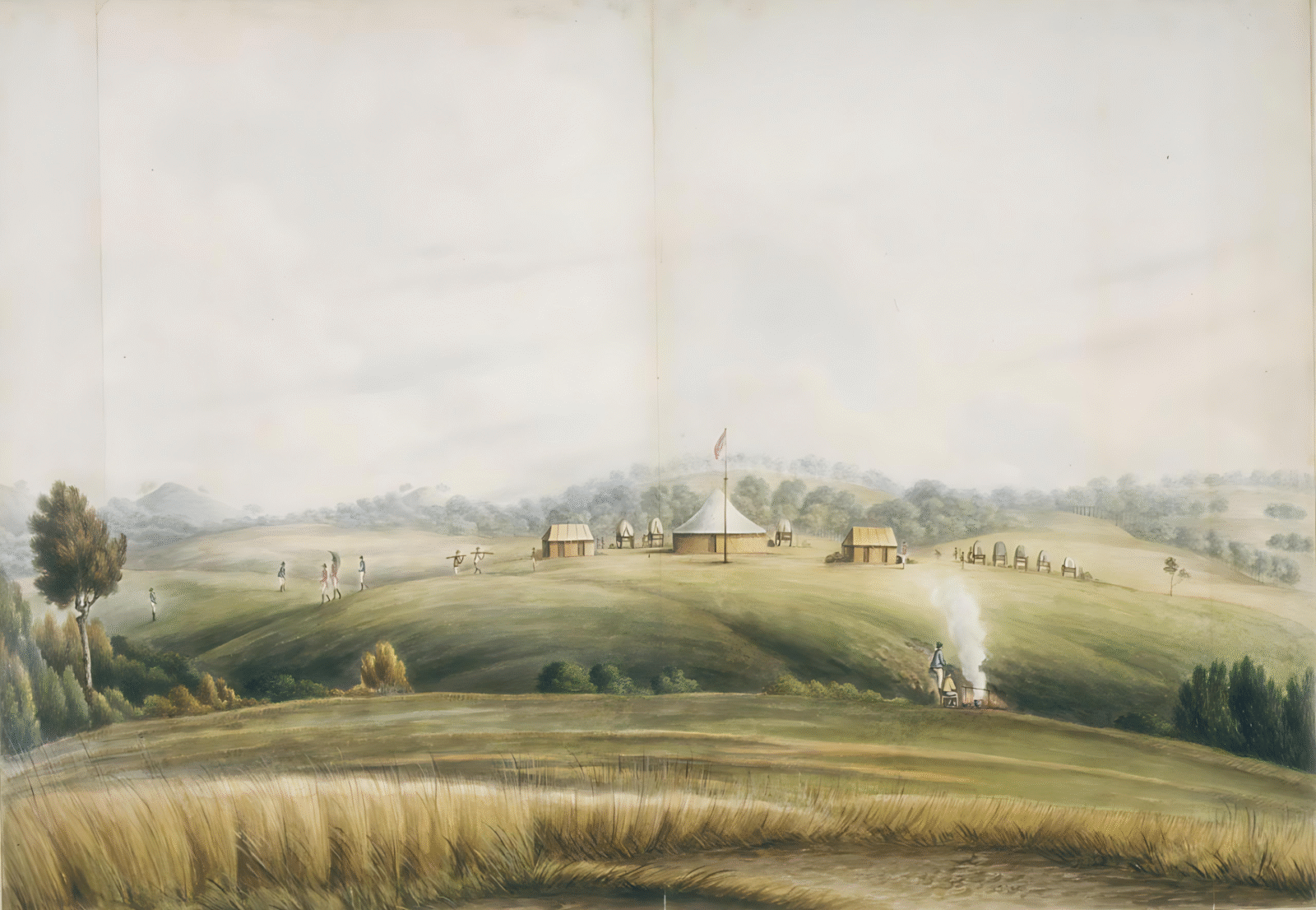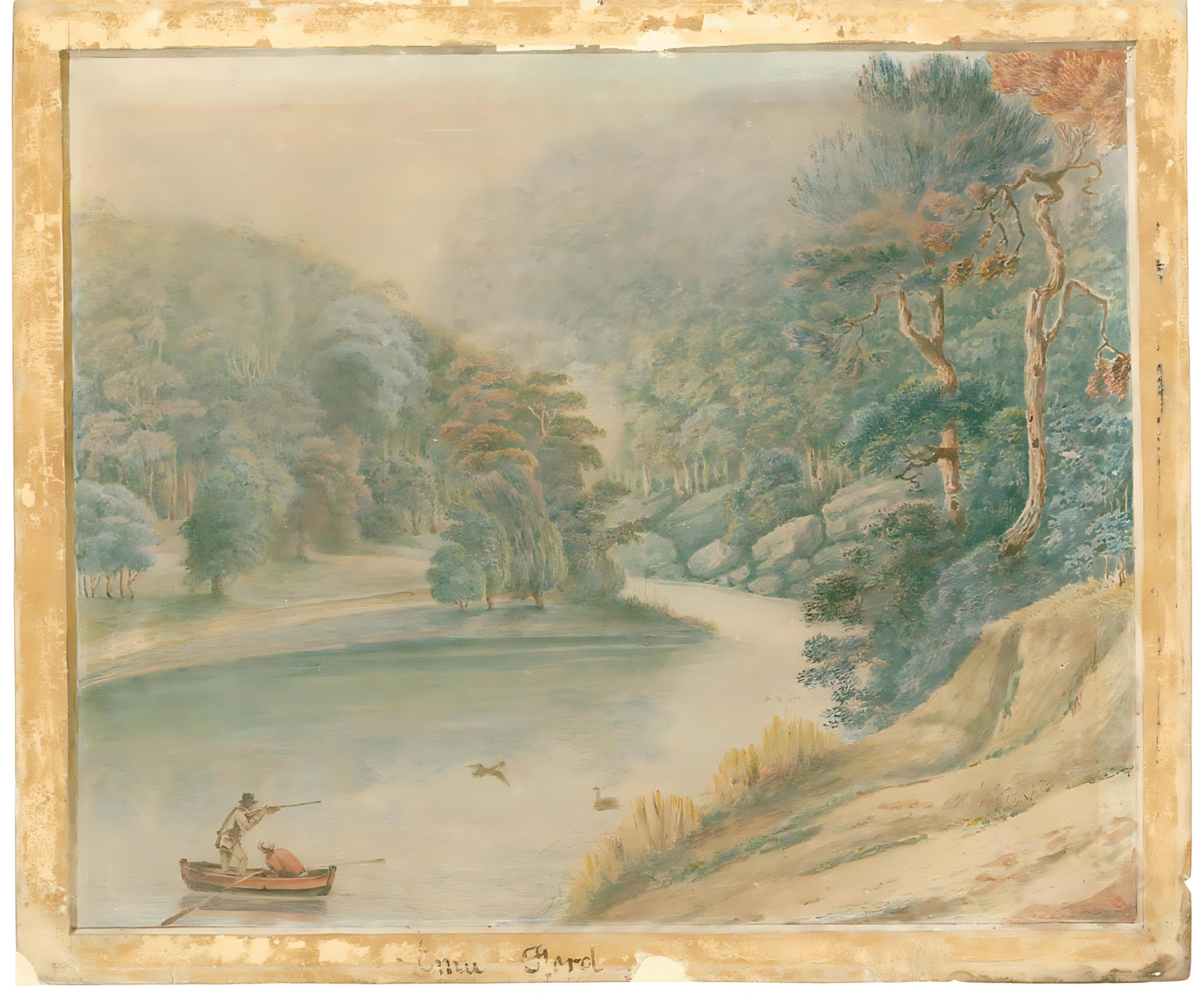Emu Ford – John William Lewin
We acknowledge Mitchell Library, State Library of NSW. Call no. PXE 888/1a Digital order no. a303016
History

The Blue Mountains formed an impenetrable barrier to inland settlement until Gregory Blaxland, William Lawson and William Wentworth established a route across in 1813. George Evans surveyed the first road that convict labourers, under the direction of William Cox, built shortly thereafter. Allowing access to the rich grazing lands beyond, the road closely follows the line of the present Great Western Highway. In 1823 Archibald Bell, with the assistance of local indigenous people, mapped an alternate route – Bells Line of Road – on the north side of the Grose Valley. Used by the Dharug people as a pathway for communication, travel and ceremonial purposes, the road remained a stock route until the twentieth century.
Following John Whitton’s engineering of the Lapstone zigzag, the rail link was extended to Weatherboard (present day Wentworth Falls) in 1867 and to Mount Victoria the following year. The line reached Lithgow Valley and beyond when the western zigzag was completed in 1869. Railway travel provided a cheap, regular and more comfortable means of transport to the Mountains and was largely responsible for subsequent urbanisation.
Grand hotels – like the Carrington and Hydro Majestic – along with a variety of boarding houses accommodated holidaymakers. Parliamentarians like Sir Henry Parkes and the well-heeled Foy, Fairfax and Hordern families built country retreats or hill stations to escape the city heat. Everglades is a surviving example of a country retreat built by Henri Van De Velde complete with a Paul Sorenson designed garden. Another is the present-day Norman Lindsay Gallery that was originally built for the Foy family only to be purchased later by artist Norman Lindsay and wife Rose. Both homes are owned and administered by the National Trust. In addition, the Mountains had some spectacular hospitals like the Queen Victoria at Wentworth Falls and Bodington Red Cross Hospital built to accommodate tuberculosis patients. Sanatoriums were built in the Mountains because the area was recognised as beneficial for recuperation due to its healthy climate and pure air.

We acknowledge Mitchell Library, State Library of NSW, Call no. V*/Expl/2 Digital order no. a128133
Today, some two to three million tourists visit the Mountains annually. Approximately 77,000 residents live in the myriad of scattered villages and townships that form the City of the Blue Mountains. It remains, however, a quiet, mainly residential region linking the rapidly expanding Sydney region with the pastoral lands of Hartley Vale, the Bathurst Plains and the industrial mining Lithgow region to the west.
Although noted at one time for its orchards, no major industries exist in the Mountains today other than tourism. Orchard growing ceased in the lower mountains as did the mining of coal and oil-shale at Katoomba by the mid 20th century. The latter site was taken over by the popular tourist attraction Scenic World.
The Greater Blue Mountains were declared a World Heritage Area in November, 2000 and in 1996 the Inaugural City of the Arts.
